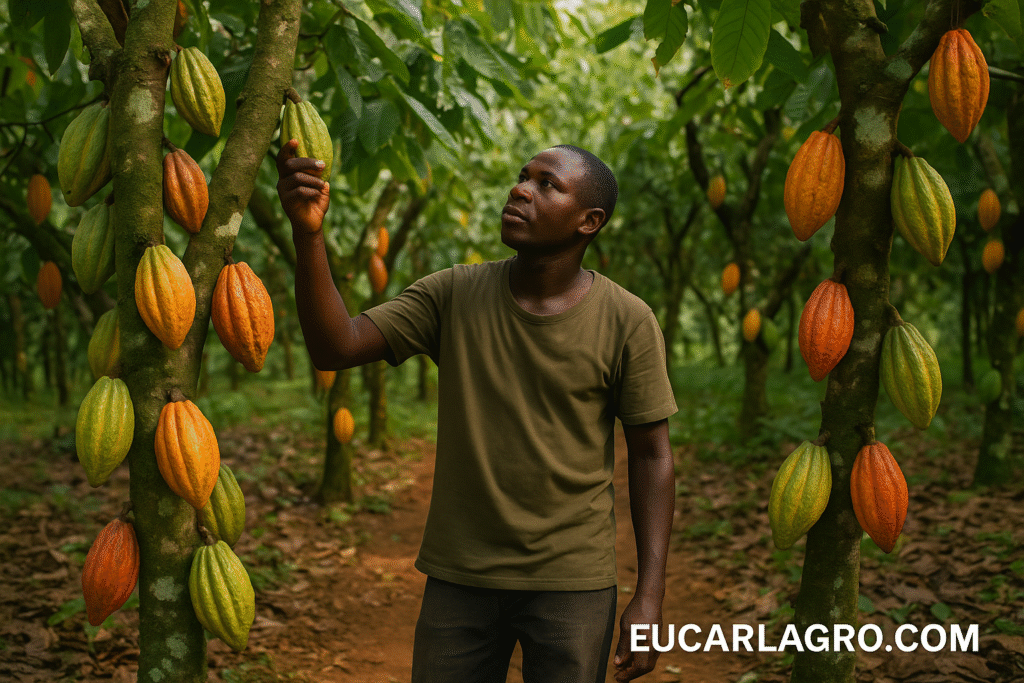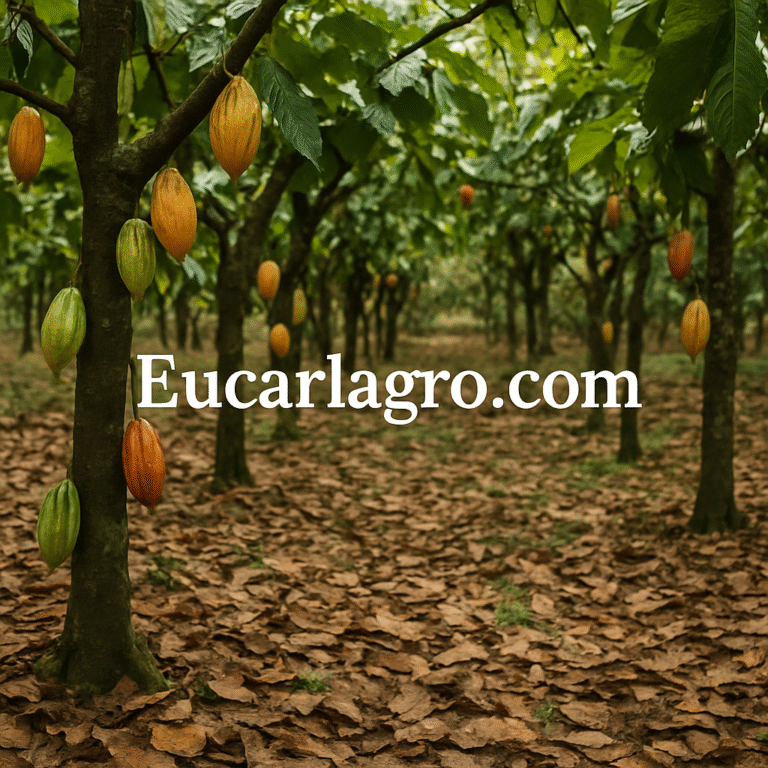Best Cocoa Varieties for Nigeria: Disease-Resistant and High-Yielding Types
Cocoa farming has long been one of Nigeria’s most lucrative agricultural ventures. As the largest cocoa producer in Africa after Côte d’Ivoire and Ghana, Nigeria plays a critical role in the global chocolate supply chain. Yet, not all cocoa varieties are equal. For Nigerian farmers to maximize yield, combat disease, and thrive in today’s competitive agricultural landscape, choosing the right cocoa variety is non-negotiable.
This comprehensive guide explores the best cocoa varieties for Nigeria — focusing on disease resistance, high yields, early maturity, and adaptability to Nigerian agro-ecological zones. Whether you’re an aspiring cocoa farmer or an established grower seeking better productivity, this article will give you practical insights backed by agricultural research and field experience.
Why Cocoa Variety Selection Matters in Nigeria

Before diving into specific varieties, let’s understand why your choice of cocoa variety can make or break your farm’s success:
1. Disease Resistance
Cocoa is vulnerable to several fungal and viral diseases, such as Black Pod Disease, Swollen Shoot Virus, and Witches’ Broom. Some varieties are genetically resistant to these threats, drastically reducing the need for costly chemical controls.
2. Higher Yield Potential
Modern hybrid varieties can produce twice or even thrice the yield of traditional or older cocoa trees. Some can yield over 1,500 kg of dry beans per hectare, compared to the national average of 300–400 kg.
3. Early Maturity
Improved varieties mature and begin bearing fruit in as little as 18–24 months, compared to 4–5 years in traditional strains. This means quicker return on investment.
4. Adaptability to Nigerian Climate
Nigeria’s climate zones vary — from the humid rainforests of Cross River and Ondo to the drier savannas in the Middle Belt. Selecting varieties suited to your specific region is vital for healthy crop development.
Main Categories of Cocoa Varieties
All cocoa varieties fall into three main categories:
1. Criollo
- High-quality beans used in premium chocolates.
- Very delicate and susceptible to pests and diseases.
- Low-yielding and not ideal for commercial farming in Nigeria.
2. Forastero
- Most widely grown globally.
- Hardier, disease-resistant, and high-yielding.
- The backbone of Nigeria’s cocoa industry.
3. Trinitario
- Hybrid between Criollo and Forastero.
- Combines fine flavor with resilience.
- Grown in limited areas due to cost and care needs.
In Nigeria, Forastero and improved hybrid varieties dominate due to their robustness and suitability for large-scale commercial production.
Best Cocoa Varieties for Nigerian Farmers
Let’s now look at the top-performing cocoa varieties recommended by Nigerian research institutes and field experts.
1. Amazon Cocoa (Traditional Forastero)
Overview:
The Amazon type is a widely cultivated Forastero variety known for its high adaptability and strong yields. It forms the genetic base for many improved hybrids in Nigeria.
Features:
- Medium-to-high yield (400–800 kg/ha dry beans).
- Resistant to drought and moderate pests.
- Starts bearing fruit in 3–4 years.
Limitations:
- Susceptible to Black Pod Disease.
- Longer maturity time compared to newer hybrids.
Best for: Farmers in Southwest Nigeria (Ondo, Osun, Ekiti) where rainfall is abundant.
2. F3 Amazon x Amelonado Hybrids (CRIN Series)
Developed by the Cocoa Research Institute of Nigeria (CRIN), these are second-generation hybrids known for superior performance.
Popular CRIN Varieties:
- CRIN TC1 – TC5
Features:
- Early maturity: Fruit production starts at 18–24 months.
- High yield potential: 1,200–1,800 kg/ha.
- High resistance to Black Pod and other fungal diseases.
- Suitable for both rainfed and irrigated conditions.
Advantages:
- Uniform pod development.
- Strong root system for anchorage and nutrient absorption.
Best for: Farmers transitioning from traditional to modern practices. Suitable across all major cocoa-producing states.
3. Nigerian Selected Hybrids (NSH Series)
These are multi-clonal hybrids specifically bred for Nigerian conditions by CRIN in collaboration with the International Institute of Tropical Agriculture (IITA).
Common NSH Varieties:
- NSH-1 to NSH-10
Features:
- Early bearing within 2 years.
- Yield potential up to 2,000 kg/ha.
- Resistance to major pests and fungal diseases.
- Compatible with intercropping systems (e.g., plantain, cassava).
Best for: Progressive farmers, agribusinesses, and commercial plantation developers.
4. T65/7 x T86/2 Hybrid
This is a widely distributed and field-tested hybrid used by commercial cocoa farms.
Features:
- High bean size and weight.
- Excellent bean-to-pod ratio.
- Medium resistance to Phytophthora (Black Pod).
Limitations:
- Requires regular pruning and canopy management.
- Best performance under well-maintained farm systems.
Best for: Farmers with moderate technical knowledge and access to extension services.
5. SCA 6 x ICS 1 (International Hybrid)
This hybrid crosses the SCA 6 (Amazonian) with ICS 1 (Trinitario), combining disease resistance and bean quality.
Features:
- High tolerance to Witches’ Broom and Black Pod.
- Fine flavor suitable for niche chocolate markets.
- Consistent pod development.
Best for: Export-oriented cocoa farmers or those supplying specialty chocolate makers.
Traits to Look For in a Good Cocoa Variety
When choosing a cocoa variety, consider these essential traits:
| Trait | Why It Matters |
|---|---|
| Yield per Hectare | Determines farm profitability. |
| Disease Resistance | Reduces losses and input costs. |
| Bean Quality | Affects selling price and market access. |
| Canopy Shape | Affects sunlight penetration and spacing. |
| Drought Tolerance | Important for savannah-edge zones. |
| Pod Maturity Duration | Influences harvest planning. |
| Root System Strength | Supports uptake of nutrients and water. |
Best Cocoa Varieties by Region in Nigeria
To help you make region-specific decisions, here’s a breakdown:
Southwest Nigeria (Ondo, Osun, Ekiti):
- CRIN TC1–TC3
- NSH-3, NSH-7
- T65/7 × T86/2
South-South (Cross River, Edo, Delta):
- SCA6 x ICS1
- CRIN TC4–TC5
- NSH-5, NSH-8
Southeast (Abia, Imo, Ebonyi):
- NSH-1 and NSH-2 (adapted to hill slopes and mixed forests)
- Amazon × Amelonado hybrids
North-Central (Kogi, Kwara):
- CRIN drought-tolerant hybrids
- NSH-10
- Amazon type with shade crops
How to Get Improved Cocoa Seedlings in Nigeria
Sourcing authentic, improved seedlings is crucial. Here are recommended sources:
- Cocoa Research Institute of Nigeria (CRIN), Ibadan
- Offers certified hybrid seedlings (TC and NSH series).
- State Agricultural Development Projects (ADPs)
- Collaborate with CRIN to distribute seedlings to farmers.
- Registered Cocoa Nurseries
- Always request for genetic certification or CRIN approval.
- Agro-dealers with Extension Support
- Ensure they follow best nursery and grafting practices.
Planting Disease-Resistant Cocoa Varieties: Best Practices
Even the most disease-resistant cocoa varieties need good agronomic support. Here’s how to get the best results:
1. Proper Land Preparation
- Clear old tree stumps, weeds, and shrubs.
- Practice deep tillage for root aeration.
2. Use Clean Planting Materials
- Avoid cuttings from infected farms.
- Always transplant certified seedlings.
3. Planting Density
- Recommended: 3m × 3m or 3m × 2.5m
- Avoid overcrowding to reduce humidity (which attracts fungi).
4. Mulching and Shade
- Use plantain, banana, or Gliricidia as temporary shade.
- Helps moisture retention and temperature regulation.
5. Pruning and Sanitation
- Remove infected pods immediately.
- Prune regularly for air and light circulation.
6. Fungicide Use (Only When Needed)
- Even resistant varieties may need periodic spraying during heavy rains.
Pro Tip: Combine Variety with Good Farm Management
A good cocoa variety alone won’t guarantee success. Combine it with:
- Soil testing and fertilization
- Timely harvesting
- Post-harvest handling (fermentation & drying)
- Market access strategies
Improved variety + smart farming = higher profits.
Economic Advantage of Improved Cocoa Varieties
Let’s do a quick comparison:
| Aspect | Traditional Variety | Improved Hybrid |
|---|---|---|
| Maturity | 4–5 years | 1.5–2 years |
| Yield (kg/ha) | 300–500 | 1,500–2,000 |
| Disease resistance | Low | High |
| Return on Investment | Delayed | Early and steady |
| Price per kg | ₦1,500–₦2,000 | ₦2,000–₦3,000 (due to better quality) |
Final Thoughts: Choose Smart, Farm Smart
Cocoa farming in Nigeria has entered a new era — one that demands efficiency, resilience, and strategic planning. Your first step in this journey is choosing a cocoa variety that aligns with your goals and environment.
If you want quick maturity, high yield, and resilience, opt for CRIN’s hybrid varieties like TC1–TC5 or NSH-3 to NSH-10. For export markets, consider fine-flavor hybrids like SCA 6 × ICS 1.
In the end, the most successful cocoa farmers are not those who simply plant — but those who plan, learn, and adapt.
Share Your Thoughts
Have you tried any of these cocoa varieties? What’s your experience like?
Comment below, ask your questions, or share this guide with other cocoa farmers who need to read this.
